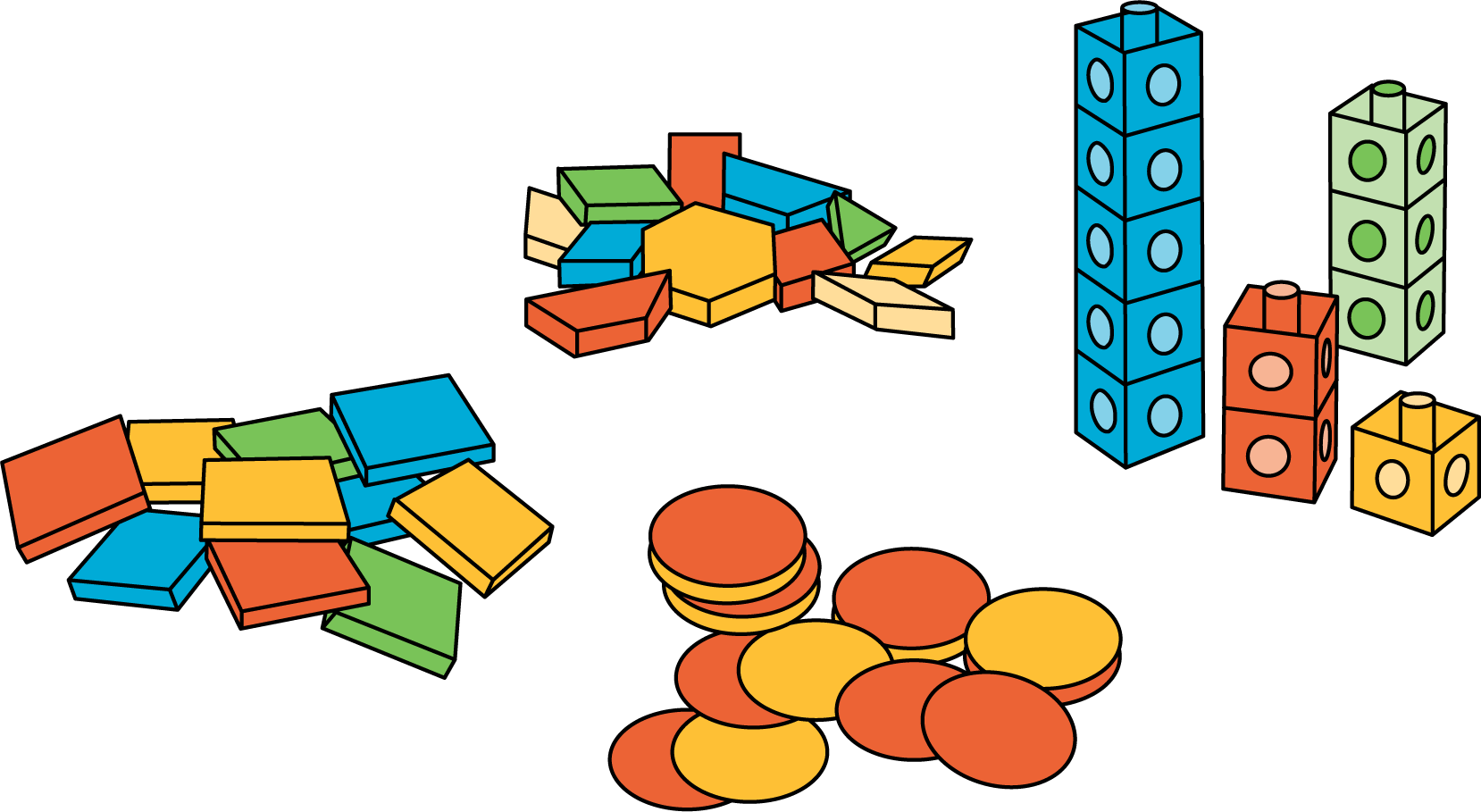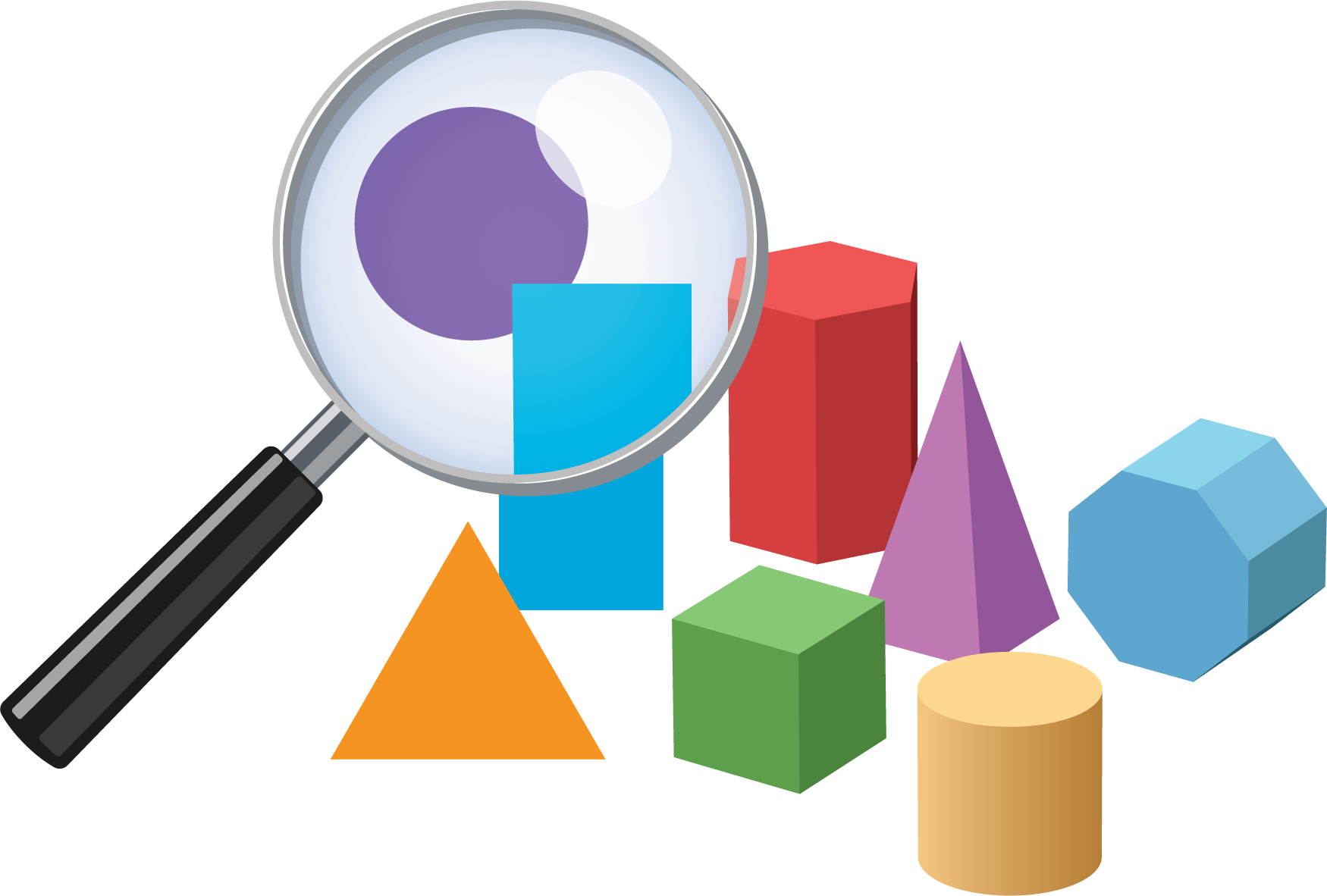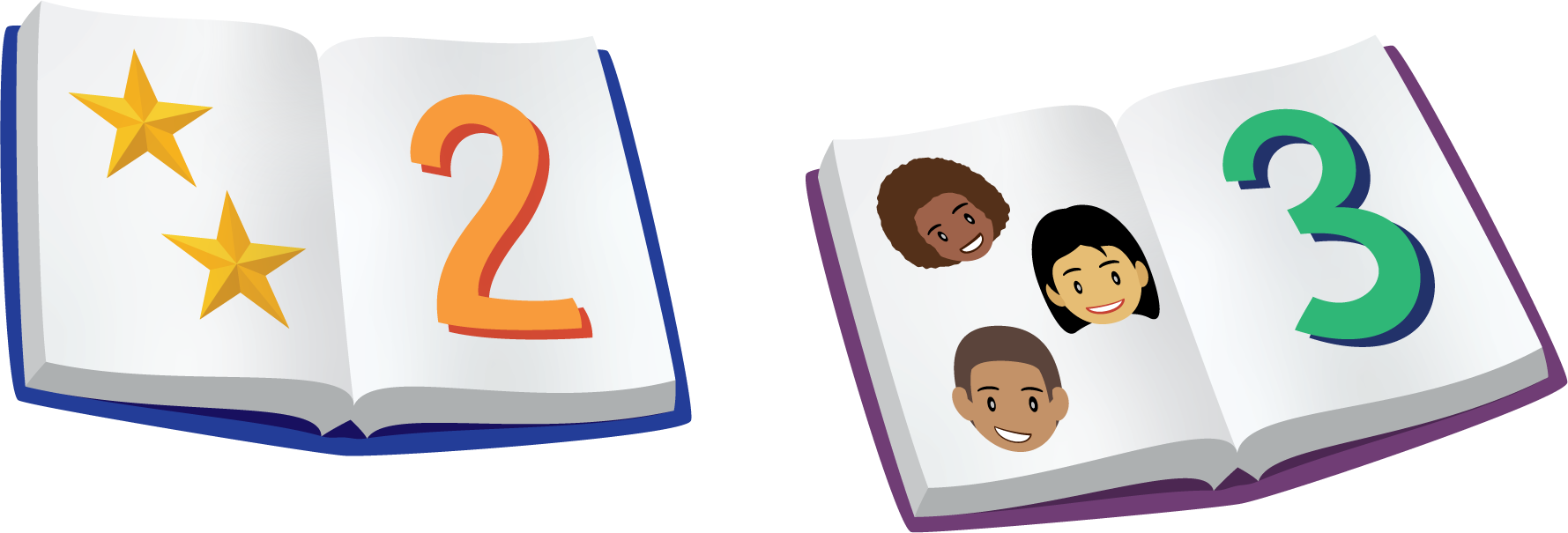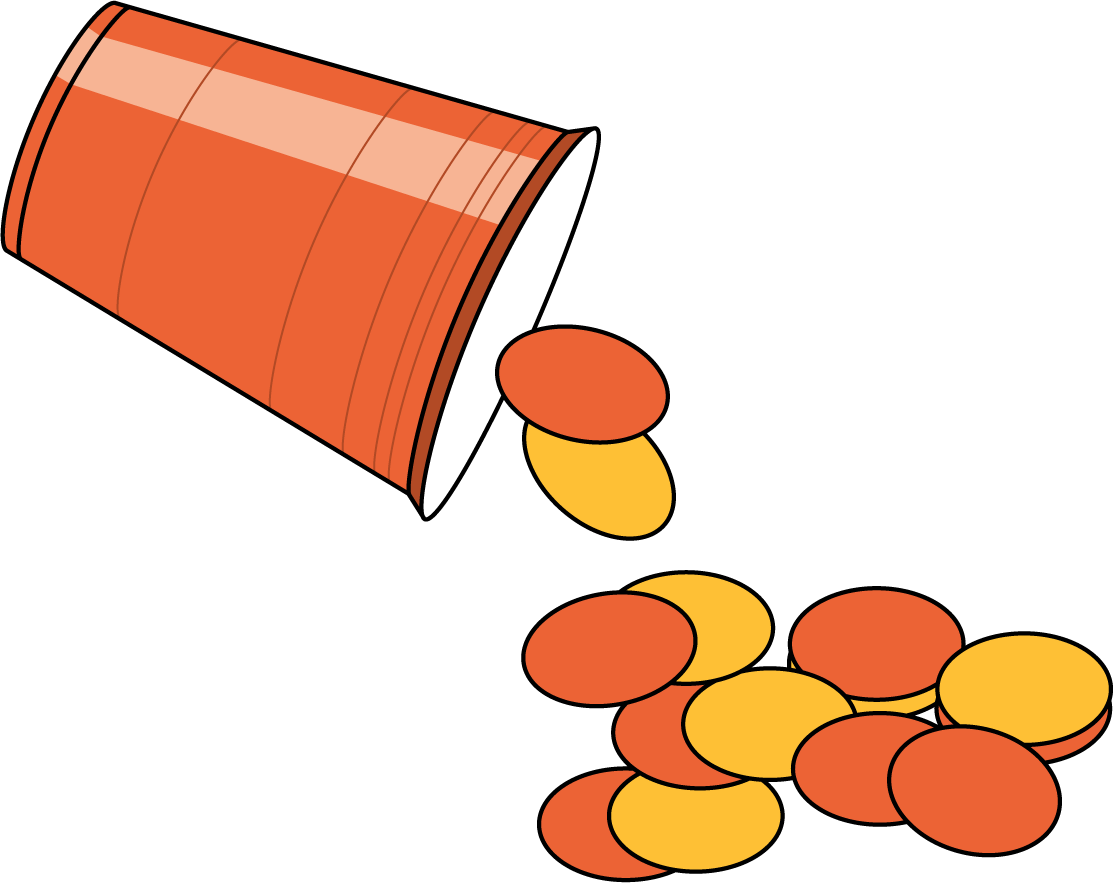Lesson 6
Rectangles and Squares
Warm-up: What Do You Know About Triangles? (10 minutes)
Narrative
The purpose of this warm-up is to introduce students to a new routine called What Do You Know About _____? In this routine, students share what they know about triangles. Students may share examples of objects in the world that look like triangles or may describe attributes of triangles.
Launch
- Groups of 2
- “What do you know about triangles?”
- 30 seconds: quiet think time
- 1 minute: partner discussion
Activity
- Record responses.
Student Facing
What do you know about triangles?
Student Response
For access, consult one of our IM Certified Partners.
Activity Synthesis
- “Where do you see triangles in your community?”
- Draw or display a triangle and a rectangle:
- “How are these shapes different?”
Activity 1: Sort Rectangles (10 minutes)
Narrative
The purpose of this activity is for students to begin to distinguish rectangles from other shapes. By working with variants and non-examples of rectangles, students begin to develop their understanding of what makes a shape a rectangle. When they discuss which group a shape should be placed in, students informally describe the attributes of the shape.
MLR8 Discussion Supports. Students should take turns finding a match and explaining their reasoning to their partner. Display the following sentence frames for all to see: “I noticed _____, so I matched . . . .” Encourage students to challenge each other when they disagree.
Advances Conversing, Listening
Advances Conversing, Listening
Required Materials
Materials to Copy
- Rectangle Sort Cards
Required Preparation
- Cut out rectangle cards from the blackline master. Each group of 4 needs 1 set of cards.
Launch
- Groups of 4
- Give each group a set of cards.
- Draw or display a rectangle:
- “Tell your partner two things you know about this shape.” (There are 4 sides. It looks like a door. It is a rectangle. It is long and flat.)
- 30 seconds: quiet think time
- 30 seconds: partner discussion
- Share and record responses.
- If needed, ask “What is the name of this shape?”
- 30 seconds: quiet think time
- “This shape is a rectangle.”
Activity
- “Work with your group to sort the shapes into two groups. Put the shapes that are rectangles on the left side of your page. Put the shapes that are not rectangles on the right side of your page. When you place a shape, tell your group why you think the shape belongs in that group.”
- 4 minutes: small-group work time
- “Write a number to show how many shapes are in each group.”
- 1 minute: independent work time
- “Which group has fewer shapes? How do you know?”
- 30 seconds: quiet think time
- 30 seconds: partner discussion
Student Facing
Let’s put the shapes into 2 groups.
Rectangle



Not a Rectangle


Student Response
For access, consult one of our IM Certified Partners.
Advancing Student Thinking
If students put shapes other than rectangles into the group of rectangles, consider asking:
- “How did you choose which group to put this shape in?”
- “What is alike, or the same, about all of the shapes in this group?”
Activity Synthesis
- Invite 1–2 groups to share how they sorted the shapes.
- Draw or display a square:
- “Which group did you put this shape in?” (We put it with the rectangles because it has 4 sides. We didn’t put it with the rectangles because it is a square.)
- “This shape is a square, which is a special rectangle because all four sides are the same length.”
Activity 2: Compare Length of Rectangles (10 minutes)
Narrative
The purpose of this activity is for students to use longer and shorter to compare the length of rectangles. Because the endpoints are lined up, students should be able to visually see which rectangle is longer, which allows them to practice using language as they develop their understanding of length (MP6).
Representation: Access for Perception. To support access for students with color blindness, use verbal emphasis, gestures, and labeled displays to differentiate between colors and objects.
Supports accessibility for: Visual-Spatial Processing, Conceptual Processing
Supports accessibility for: Visual-Spatial Processing, Conceptual Processing
Launch
- Display the image or draw the shapes:
- “What is the same about these shapes? What is different about them?” (They are both rectangles. The red rectangle is taller, or longer, than the blue rectangle.)
- “Which rectangle is shorter?” (The blue rectangle is shorter than the red rectangle.)
Activity
- “Circle the rectangle that is longer. Tell your partner how you know which rectangle is longer.”
- 1 minute: partner work time
- Repeat the steps with the second problem.
- “Circle the rectangle that is shorter. Tell your partner how you know which rectangle is shorter.”
- 1 minute: partner work time
- Repeat the steps with the last two problems, first with longer and then with shorter.
Student Facing

Student Response
For access, consult one of our IM Certified Partners.
Activity Synthesis
- Display the last problem.
- “Use ‘longer than’ to describe these rectangles.”
- “Use ‘shorter than’ to describe these rectangles.”
- Invite students to chorally repeat these words or phrases in unison 1–2 times:
- “The yellow rectangle is longer than the red rectangle.”
- “The red rectangle is shorter than the yellow rectangle.”
- Rotate the book so that the yellow rectangle is on top:
- “Which rectangle is longer?”
- “Even though we turned them, the yellow rectangle is longer than the red rectangle.”
Activity 3: Centers: Choice Time (25 minutes)
Narrative
The purpose of this activity is for students to choose from activities that offer practice with number and shape concepts.
Students choose from any stage of previously introduced centers.
- Counting Collections
- Which One
- Picture Books
- Bingo
- Shake and Spill
Required Materials
Materials to Gather
Required Preparation
- Gather materials from:
- Counting Collections, Stage 1
- Which One, Stage 1
- Picture Books, Stages 1–3
- Bingo, Stages 1 and 2
- Shake and Spill, Stages 1 and 2
Launch
- “Today we are going to choose from centers we have already learned.”
- Display the center choices in the student book.
- “Think about what you would like to do first.”
- 30 seconds: quiet think time
Activity
- Invite students to work at the center of their choice.
- 10 minutes: center work time
- “Choose what you would like to do next.”
- 10 minutes: center work time
Student Facing
Choose a center.
Counting Collections

Which One

Picture Books

Bingo

Shake and Spill

Activity Synthesis
- “What was something that felt challenging during centers today? Why did it feel challenging?”
Lesson Synthesis
Lesson Synthesis
Draw the shapes: 
If needed, ask “Which rectangle is longer?” (The blue rectangle is longer than the red rectangle.)

If needed, ask “Which rectangle is longer?” (The blue rectangle is longer than the red rectangle.)
Cool-down: Unit 3, Section A Checkpoint (0 minutes)
Cool-Down
For access, consult one of our IM Certified Partners.








